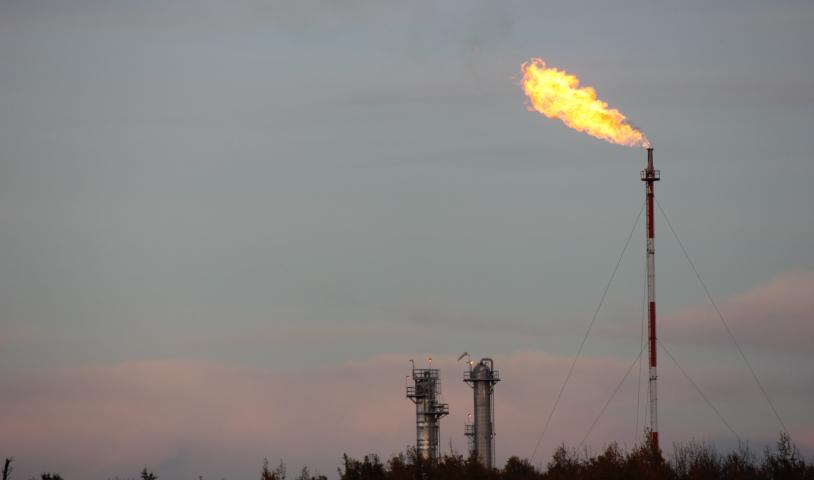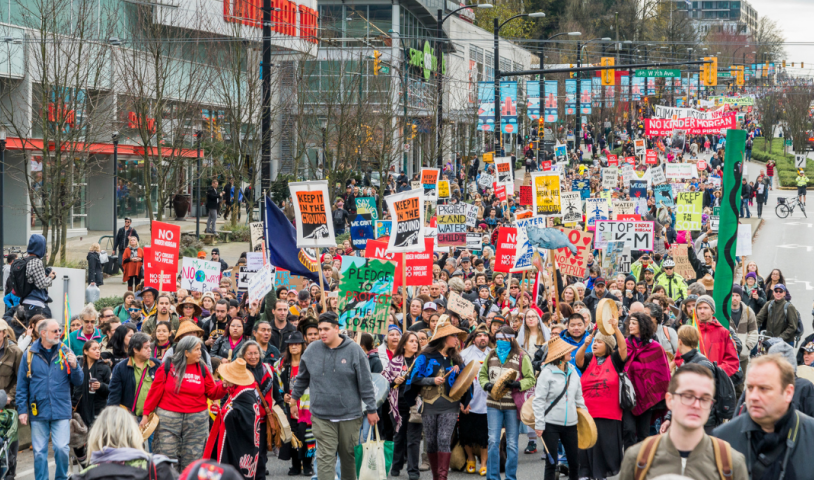Gwen Barlee: Private run‑of‑river power projects make no sense in B.C.
Wednesday, May 20, 2009Joint business ventures don’t often grab the public’s attention. In fact, the massive $4-billion hydroelectric proposal from Plutonic Power and U.S. giant General Electric might have gone unnoticed by British Columbians were it not for the fact that it involves diverting and damming 17 streams and rivers in B.C.’s spectacularly scenic Bute Inlet watershed.
If approved, the proposed 1027-megawatt Bute Inlet project would be the largest private power project in Canada, on par with B.C. Hydro’s controversial Site C megaproject proposal. The Bute project, located 150 kilometres north of Powell River, would also see the construction of over 445 kilometres of transmission lines, 314 kilometres of roads, and 104 bridges—all located in the heart of grizzly bear, mountain goat, and salmon habitat.
Although the project is huge, it is not an anomaly. Indeed, in B.C. today over 700 streams and rivers have been staked by private companies. The mad rush to privatize our streams and rivers was triggered by the 2002 B.C. Energy Plan, which forbade B.C. Hydro, our very profitable Crown corporation, from producing new sources of hydroelectricity. Since then there has been a whopping 1,146 percent increase in water-licence applications as speculators, stock promoters, and mining corporations rush to the spoils.
The provincial government has tried to market this energy as being “green”, but although the energy produced is arguably low-carbon it isn’t green, sustainable, or democratic. It is surprising to learn that there is no provincial or regional planning for the development of these projects, and, since the B.C. government passed the infamous Bill 30, local governments have had their zoning authority for these projects removed. The vast majority of river diversions, euphemistically referred to as “run of river”, don’t even undergo an environmental assessment, and even if they did the process is so weak the Environmental Assessment Office has only once recommended that an industrial project not proceed.
Astoundingly, each private power project is approached as a “one-off” without considering the cumulative impacts of other nearby projects. For instance, in the Sea-to-Sky corridor, 110 streams and rivers have been staked with no regard for the cumulative impacts that scores of new developments with accompanying roads, transmission lines, and tunnels could have on the landscape.
Even more disturbing is the few times a project triggers an actual “public consultation”, the project’s proponent designs the process. Here, a proponent’s desire to have the project proceed can trump the public’s need to be impartially and fully consulted. Indeed, why would a proponent design an inclusive process when that could hurt the chances of their project proceeding? Perhaps that explains why there have been no public meetings held in nearby population centres like Victoria or Vancouver on the Bute Inlet project.
Government agencies provide little help because they are overworked and overwhelmed. The Ministry of Environment was gutted by the B.C. government in 2002, losing almost a third of its budget and staff. As a result there is almost no capacity to “ground-truth” the information presented by proponents, and a very limited capacity to monitor private power projects once they are up and running.
The public is told that we need this power because B.C. has an electricity shortage, but an examination of the facts shows this isn’t the case. According to B.C. Stats, the province has been a net exporter of electricity for seven out of the last 11 years. Even if we did need the electricity we could revisit the Columbia River Treaty and have electricity rather than dollars returned to the province. We could also retrofit existing dams to produce more power at a lower cost to the environment and ratepayers than the private power projects.
To add to the folly, because much of the private hydropower energy comes at the wrong time of the year, typically during spring run-off when B.C. Hydro’s dams are full, but when California’s energy needs are high, in all likelihood private power that is bought at a premium by our Crown corporation will be sold at a loss to our neighbours south of the border.
What is equally disturbing is the hundreds of thousands of dollars in donations from individuals and companies associated with private power that have been given the B.C. Liberals over the last five years. One of the biggest players, Plutonic, has hired key Liberal aides including former ministerial and executive assistants as well as a previous chief-of-staff.
The Wilderness Committee is calling for an immediate moratorium on the development of private power projects. In an era of climate change and diminishing oil reserves, it makes no sense for us to lose control of public production of hydroelectricity. Our publicly owned power system already has one of the lowest carbon footprints in the world, and as we move forward to address climate change we can do so in a way that is democratic, properly planned, protects the environment, and benefits our province.
Gwen Barlee is the policy director for the Wilderness Committee.





